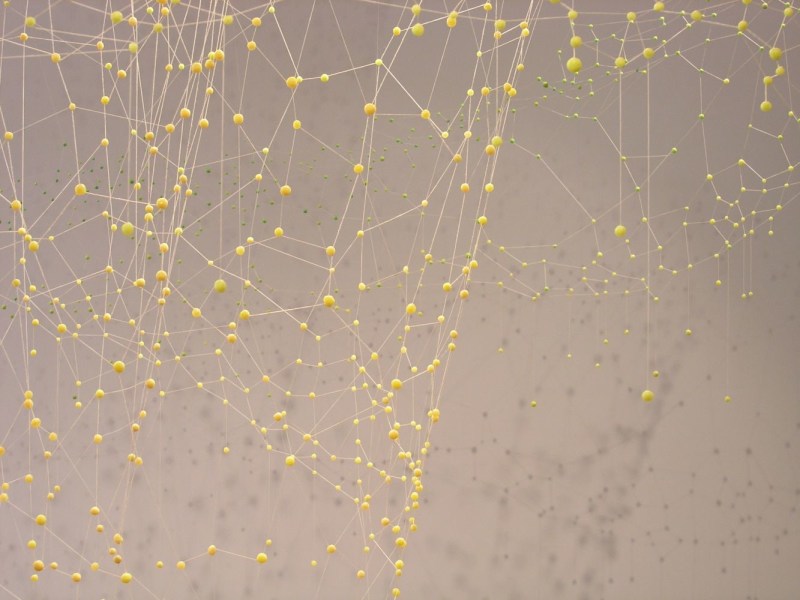
Vasanta, 2004
Beeswax, pigments, tea dyed strings
288″ x 155″ x 126″
ART IN REVIEW: Ranjani Shettar
Talwar Gallery
108 East 16th Street, Manhattan
Ranjani Shettar, a young Indian artist based in Bangalore, makes her New York solo debut with this two-sculpture show, and it's a beauty. The first piece, ''Vasanta,'' in Talwar's front gallery, is a suspended net-like curtain in the form of a spiral, made entirely from threads joined together by hand-molded beeswax pellets.
With the threads at odd angles and the pellets irregularly placed, the piece brings the openwork sculptures of Lenore Tawney and Gego to mind. It also suggests natural forms like cobwebs and constellations, an effect reinforced by the shadows cast on the wall. The piece is also subtly but vivaciously colored. Infused with natural pigments, the pellets are arranged on a spectrum that gradually moves from yellow, at the center of the spiral, to green and gentle blue in the seasonal transformation implied by the title: ''Vasanta'' means spring in Hindi.
A complementary, though very different piece, titled ''In Bloom,'' is formed from thick clusters of purple lacquered beads hung from threads in garlandlike swags. Again, natural forms come to mind: Ms. Shettar was inspired by the flowering bougainvillea seen everywhere in India. At the same time, the clusters evoke molecular structures, just as the webs in ''Vasanta'' suggested networking models of digital communication. Such technological associations are, in turn, complicated by the grass-roots nature of the work. The beads used for ''In Bloom'' were handmade by craftsman in the Bangalore area who ordinarily produced lacquer toys.
With so much going on, it's little wonder that Ms. Shettar's work, so opulent in its modesty, has already gained attention in the much-praised American traveling exhibition ''How Latitudes Become Forms.'' New York will surely be seeing more of her.
-Holland Cotter